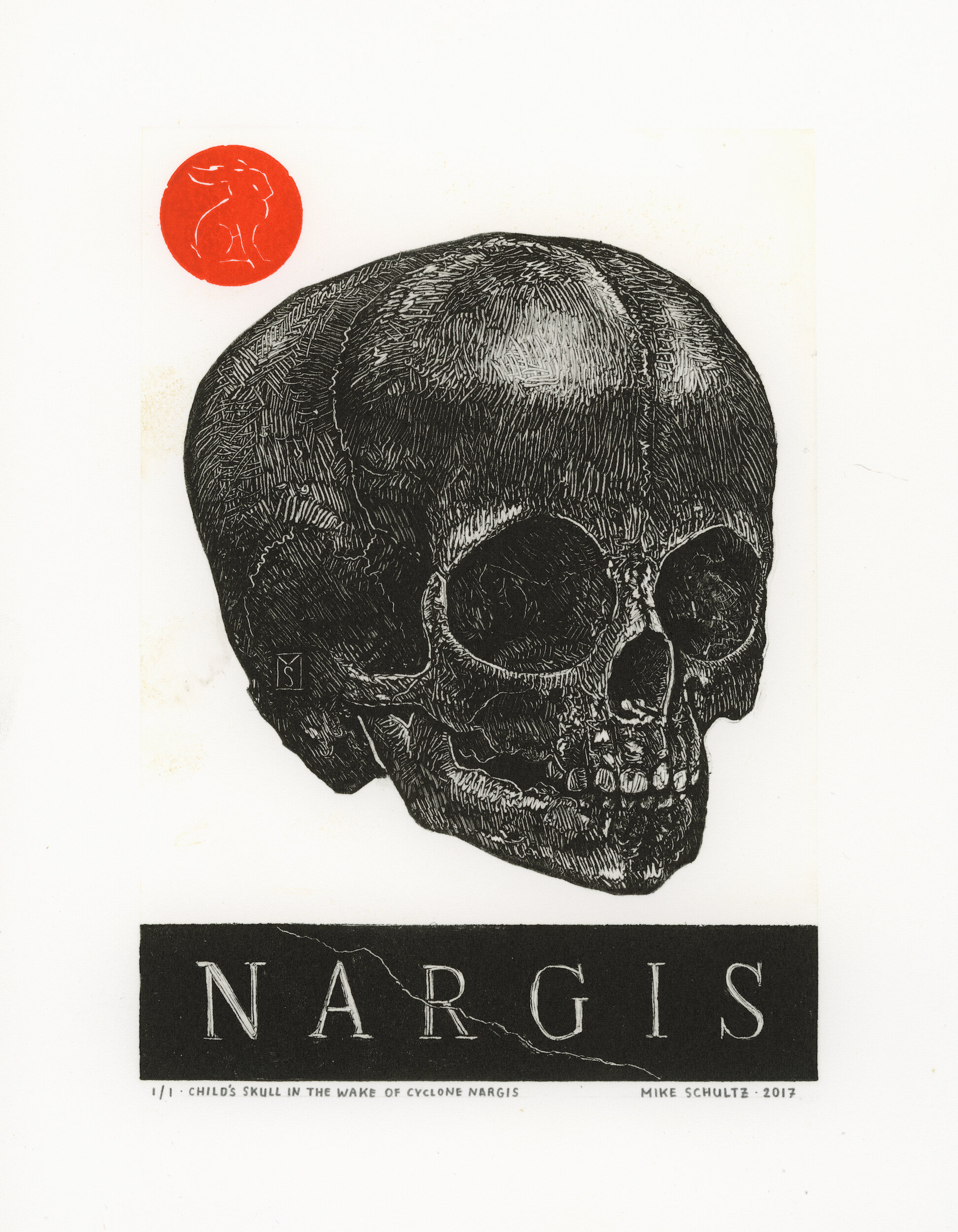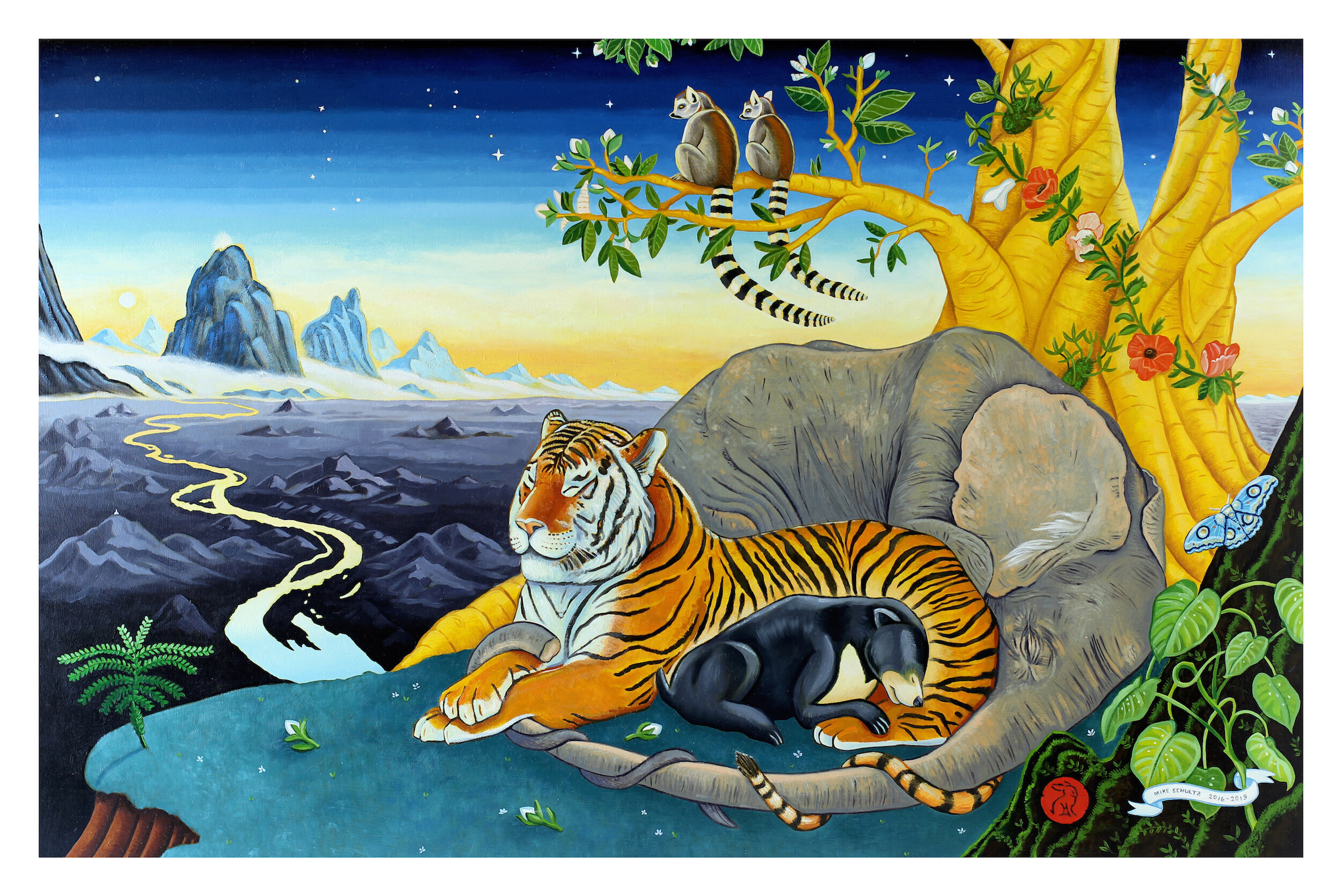A R T I S T ’ S S T A T E M E N T
The current body of work I am producing is entitled, “The Cataclysm of Colonialism.” The general theme of the project is my belief that every major world problem we have today (be it social, environmental, economic) can be traced back to the era of unbridled colonial conquest. Conquest defined as, “the subjugation and assumption of control of a place or people by use of military force.”
The theme is broad enough that I can shift my interest from objects that are more historical, like a sailor’s Meerschaum pipe that traveled around the world with the British East India Company, to botanicals such as the nutmeg plant. Seemingly innocuous, the demand for nutmeg led the Dutch to enslave and massacre the entire population of the Banda islands in Indonesia, and later trade the island of Manhattan to the British for greater control of the spice trade.
Plants like: pepper, the poppy, cotton, and tea were the staples of Empire, and drove the race for conquest. The Opium Wars were the result of a campaign by the British against the Chinese— literally weaponizing the poppy plant with the intention of addicting the Chinese population, in order to secure a lower price for tea. Two recent oil paintings from 2020, “Vice,” and “Poppies with Double Headed Baby Cobra,” are both about botanicals, narcotics, addiction, and the notion that today’s opioid crisis is the modern day equivalent to The Opium Wars of the 19th Century.
As a printmaker, I like the challenge of using only black and white to create depth in the picture plane, and to make solid, emblematic designs. Years of creating prints in this way have begun to directly influence how I paint.
One of my current goals is to make oil paintings that read like finished, full color versions of my monotypes, while also being reminiscent of a naturalist’s flora fauna illustrations. Printmaking with black ink on white paper freed me up to paint imagery on a cream colored ground without feeling the need to render in that open space. You can see this reflected in the relationship between my earlier monotype, "Cotton Flower, India" and my oil painting, "Poppies with Double Headed Baby Cobra.” Another example is the monotype, “Mango,” and the corresponding narrative oil painting, “Mango Dragon With Tree Spirit.” The print, “Child's Skull (In the Wake of Cyclone Nargis),” and the oil painting “Vice,” are related in the same way. The image from “Child's Skull” was also used in the mixed media sculpture, “A Spirit House for the Green Ghosts of War (Night).”
While thematically different, the formal basis for the colored pencil and giclee print, “Hero Mom,” was the monotype, “Opium Wars, 1839.” Similarly, the perspective for the winding river in the commissioned narrative painting, “The Fire Tiger,” was directly taken from, “Night (Red Panda, Hoolock Gibbon)”, a letterpress print from my project, Thailand Burma Flora Fauna. This is an example of my understanding of how to describe space being informed by working with a limited palette.
More painterly monotypes, like “Sunset Over Burma,” are related to my sumi ink and brush paintings.
“Javan Rhinoceros,” “Cheetah, Trophy,” “Tasmanian Tiger,” and many other wildlife images depict specific animals that are hunted to extinction. For the hunter, these trophy animals serve as symbols of conquest over the natural world, and further echo the Colonialist mindset.
I gained a formal foundation in traditional arts and crafts at the Kansas City Art Institute, where I received my BFA. My training included oil painting, illustration, wood sculpture and ceramics, which later led to furniture building, and handmade linocut, letterpress and monotype prints. For more than a decade I have been exploring how conventional techniques dovetail with technology. I use Photoshop, high resolution scanners, and the most up-to-date giclee printing to plan and mock up every aspect of my work before execution. An example of this marriage of old and new is that I design my painting compositions in Photoshop using underlying sacred geometry that dates to antiquity. I then digitally print out the compositions to size on paper, and apply them to my wood panel/canvas using a graphite transfer technique— this saves on both time and materials, and it also serves to push my compositions during the planning stage, allowing significant experimentation before arriving at the final image.
Currently, I am painting two works based on my monotypes about Cyclone Nargis, which struck Burma in 2008. In my view, the death toll from Nargis is the tragic culmination of centuries of ill-fated chess plays by the Western powers in Southeast Asia. For example, the dystopian surveillance and penal system adopted by the military junta in Burma is a direct legacy of the pre World War II British occupation, which shaped their insular response to the natural disaster and led to an even larger humanitarian crisis. It is my belief that to fully comprehend any modern global issue, we must recognize and examine the profound and catastrophic impact which colonialism has had on our world.
“If you don’t know history, then you don’t know anything. You are a leaf that doesn’t know it is part of a tree. ” ― Michael Crichton















































